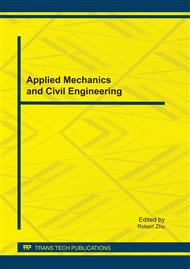p.140
p.144
p.149
p.154
p.159
p.167
p.175
p.181
p.186
Simulation Research and Application on Control Technology of Long Concrete Wall Cracks in Basement
Abstract:
This paper aims at research on fundamental principles of long concrete wall cracks in basement on the basis of series basic experiments and engineering practices. Relying on typical project, we use ABAQUS finite element analysis software to conduct simulation analysis to provide evidence for integrated control of cracks. Simulation analysis results show that the reinforcement stresses has tight connections with constraint mode of structure, for instance, column side and the location connected with foundation; effective limits of boundary constraints to structure deformation and constraints of free-form deformation on long wall structure make the concentration of reinforcement stresses nearing constraint location relatively obvious; under the effects of temperature and contraction, internal force of concrete wall will be re-distributed, therefore, reinforcement stress of concrete can not directly reveal actual force distribution inside the wall, but the overall trend is close to concentrated pattern of reinforcement stress.
Info:
Periodical:
Pages:
159-166
Citation:
Online since:
October 2011
Authors:
Keywords:
Price:
Сopyright:
© 2012 Trans Tech Publications Ltd. All Rights Reserved
Share:
Citation:


